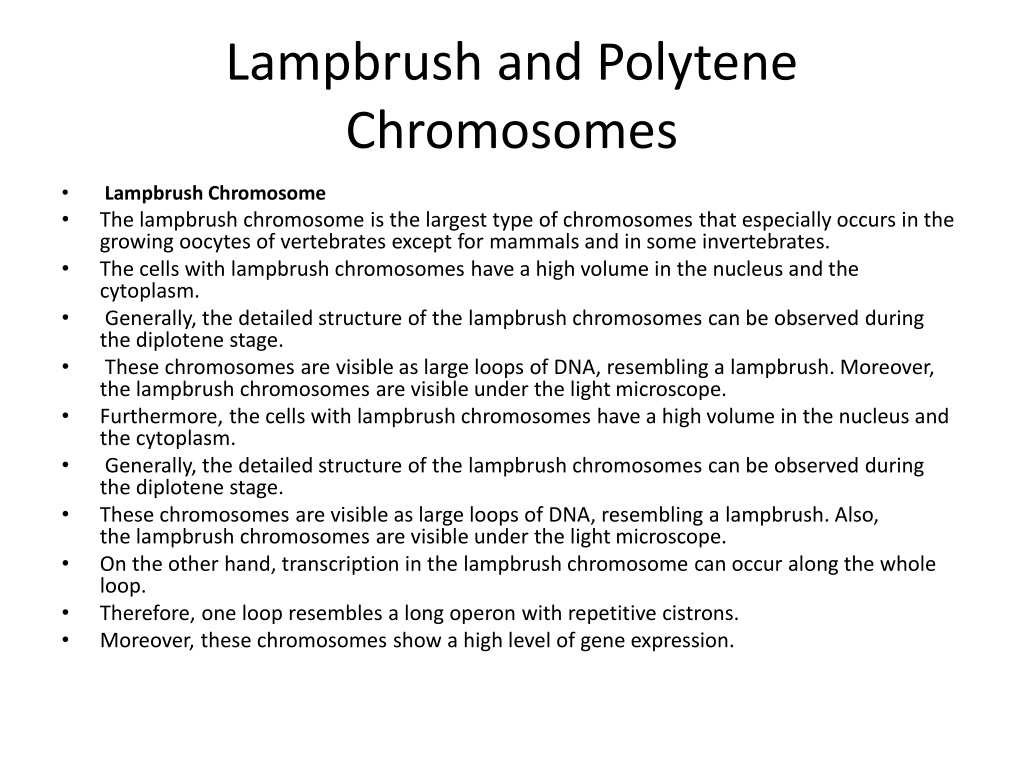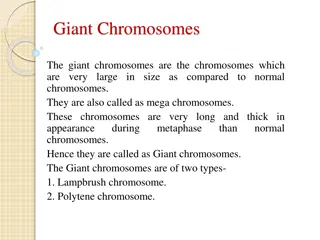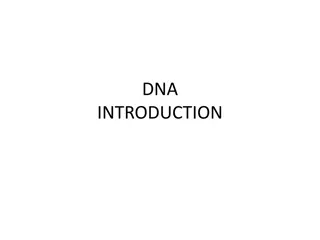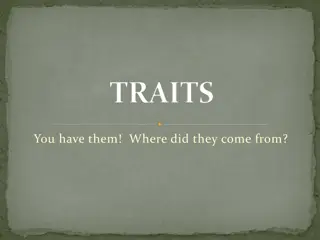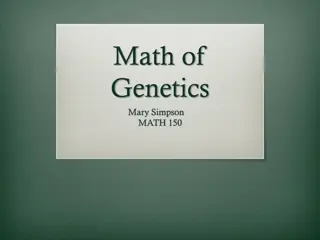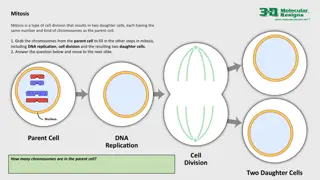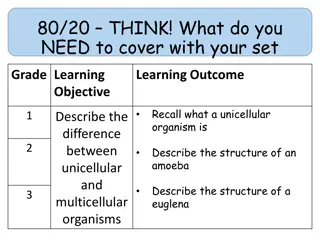Lampbrush and Polytene Chromosomes: Structures and Functions
Lampbrush chromosomes, found in growing oocytes of vertebrates, display large loops of DNA during the diplotene stage, with high gene expression levels. Polytene chromosomes, giant interphase chromosomes in insects, contain multiple strands with distinct banding patterns. Chromocenter serves as the central point in polytene chromosomes, exhibiting thick and thin bands of euchromatin and heterochromatin. Puffs on chromosome structures indicate active regions. Understanding these specialized chromosome types provides insight into genetic organization and gene expression regulation.
- Lampbrush chromosomes
- Polytene chromosomes
- Genetic organization
- Chromosome structure
- Gene expression
Download Presentation

Please find below an Image/Link to download the presentation.
The content on the website is provided AS IS for your information and personal use only. It may not be sold, licensed, or shared on other websites without obtaining consent from the author. Download presentation by click this link. If you encounter any issues during the download, it is possible that the publisher has removed the file from their server.
E N D
Presentation Transcript
Lampbrush and Polytene Chromosomes Lampbrush Chromosome The lampbrush chromosome is the largest type of chromosomes that especially occurs in the growing oocytes of vertebrates except for mammals and in some invertebrates. The cells with lampbrush chromosomes have a high volume in the nucleus and the cytoplasm. Generally, the detailed structure of the lampbrush chromosomes can be observed during the diplotene stage. These chromosomes are visible as large loops of DNA, resembling a lampbrush. Moreover, the lampbrush chromosomes are visible under the light microscope. Furthermore, the cells with lampbrush chromosomes have a high volume in the nucleus and the cytoplasm. Generally, the detailed structure of the lampbrush chromosomes can be observed during the diplotene stage. These chromosomes are visible as large loops of DNA, resembling a lampbrush. Also, the lampbrush chromosomes are visible under the light microscope. On the other hand, transcription in the lampbrush chromosome can occur along the whole loop. Therefore, one loop resembles a long operon with repetitive cistrons. Moreover, these chromosomes show a high level of gene expression.
Polytene chromosomes are gigantic interphase chromosomes, which represent very important models for the analysis of the genetic organization of chromosomes and the genome as a whole.
A polytene chromosome is a type of giant chromosome with a high- level function in some tissues of insects such as salivary glands. It was first discovered by E.G.Balbiani in 1881. Generally, it is clearly visible under the compound microscope during the interphase and prophase due to their enormous size. Basically, polytene chromosomes are much larger than normal chromosomes and their size can reach up to 200 m in length. Significantly, the duplication of chromonema without separation is the reason for their large size. Therefore, polytene chromosomes contain 1000 times more DNA than the normal somatic chromosomes. The name polytene is given due to these many strands.
Moreover, chromocenter is the central point of a polytene chromosome. From this central point, 5 long and one short arms radiate. Its central point is formed by the fusion of all the centromeres in the nucleus. During the interphase, polytene chromosomes contain distinct thick and thin banding patterns. Generally, intensely stained segments are the heterochromatin, and they are genetically inactive while the less intensely stained segments are euchromatin, which is genetically active. Approximately, 80% of DNA occurs in the bands while the rest occurs interband.
On the other hand, based on the development stage, the functional state of the chromosome structure differs. These expanding regions on the chromosome structure are called puffs, and they are the active chromosomal regions. Furthermore, due to the presence of polytene chromosomes, cell expands with the increase of the size of the nucleus. The presence of multiple copies of genes as a result of duplications in polyetene chromosomes provides a high level of gene expression .
Similarities Between Polytene and Lampbrush Chromosome Polytene and lampbrush chromosomes are two types of giant chromosomes. They decondense during the interphase. Moreover, they actively undergo transcription. During metaphase, they are very long and thick.
